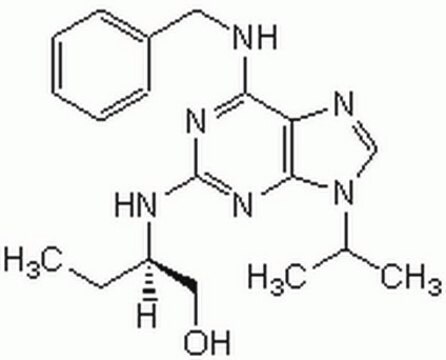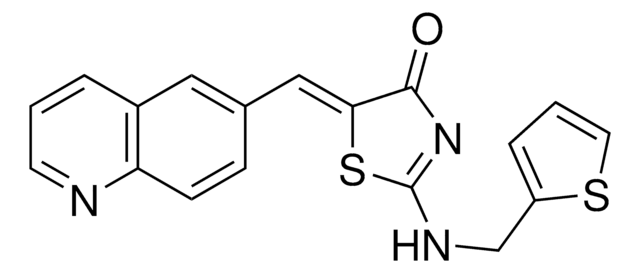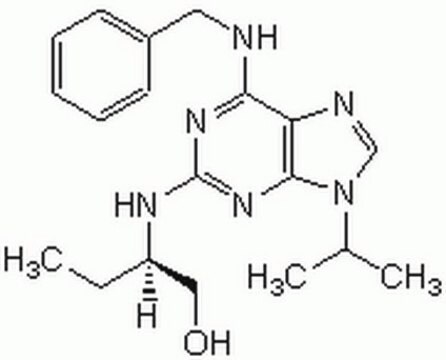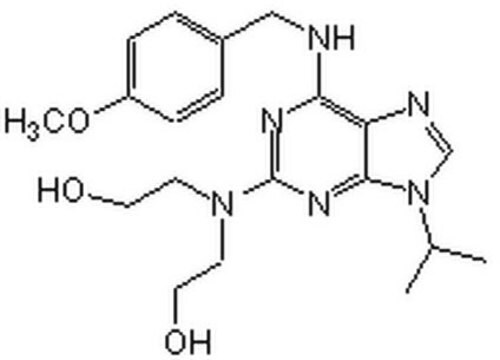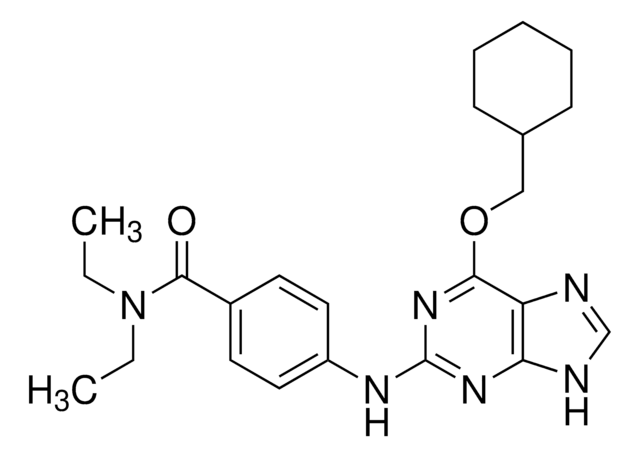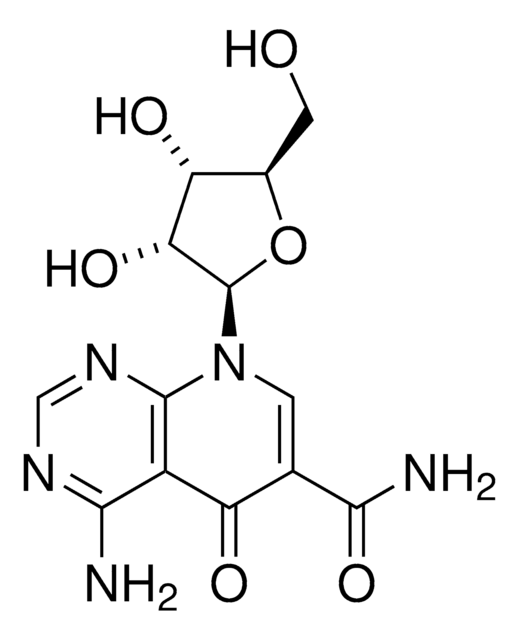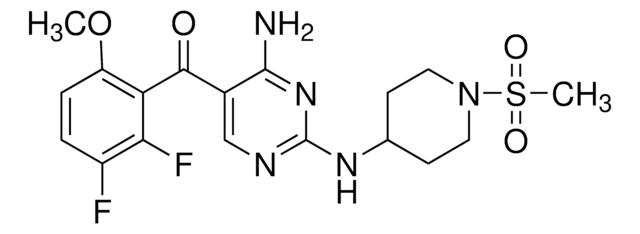R7772
Roscovitine
≥98% (TLC)
Sinónimos:
2-(R)-[[9-(1-Methylethyl)-6-[(phenylmethyl)amino]-9H-purin-2-yl]amino]-1-butanol, 6-(Benzylamino)-2(R)-[[1-(hydroxymethyl)propyl]amino]-9-isopropylpurine
About This Item
Productos recomendados
biological source
synthetic (organic)
assay
≥98% (TLC)
form
powder
mp
106-107 °C
solubility
chloroform: 50 mg/mL, clear, colorless to light yellow
storage temp.
−20°C
SMILES string
CC[C@H](CO)Nc1nc(NCc2ccccc2)c3ncn(C(C)C)c3n1
InChI
1S/C19H26N6O/c1-4-15(11-26)22-19-23-17(20-10-14-8-6-5-7-9-14)16-18(24-19)25(12-21-16)13(2)3/h5-9,12-13,15,26H,4,10-11H2,1-3H3,(H2,20,22,23,24)/t15-/m1/s1
InChI key
BTIHMVBBUGXLCJ-OAHLLOKOSA-N
Gene Information
human ... CDK1(983) , CDK2(1017) , CDK5(1020) , CDK7(1022) , CDK9(1025) , CDKN1A(1026) , CDKN1B(1027) , CDKN1C(1028) , CDKN2A(1029) , CDKN2B(1030) , CDKN2C(1031) , CDKN2D(1032) , CDKN3(1033)
mouse ... CDK1(12534)
rat ... CDK1(54237)
¿Está buscando productos similares? Visita Guía de comparación de productos
Application
- an inhibitor of p34cdc2/cyclin B kinase to preculture porcine oocytes
- as a supplement in TCM199 medium for in vitro prematuration of cumulus-oocyte complexes (COCs) of adult goats
- in astrocyte conditioned media as an inhibitor of cyclin-dependent kinase 5 (CDK5)
- as a CDK2 inhibitor in culture media to treat hESCs
Biochem/physiol Actions
Features and Benefits
Legal Information
Storage Class
11 - Combustible Solids
wgk_germany
WGK 3
flash_point_f
Not applicable
flash_point_c
Not applicable
ppe
Eyeshields, Gloves, type N95 (US)
Elija entre una de las versiones más recientes:
Certificados de análisis (COA)
¿No ve la versión correcta?
Si necesita una versión concreta, puede buscar un certificado específico por el número de lote.
¿Ya tiene este producto?
Encuentre la documentación para los productos que ha comprado recientemente en la Biblioteca de documentos.
Los clientes también vieron
Contenido relacionado
Apoptosis, or programmed cell death (PCD), is a selective process for the removal of unnecessary, infected or transformed cells in various biological systems. As it plays a role in the homeostasis of multicellular organisms, apoptosis is tightly regulated through two principal pathways by a number of regulatory and effector molecules.
n proliferating cells, the cell cycle consists of four phases. Gap 1 (G1) is the interval between mitosis and DNA replication that is characterized by cell growth. Replication of DNA occurs during the synthesis (S) phase, which is followed by a second gap phase (G2) during which growth and preparation for cell division occurs. Together, these three stages comprise the interphase phase of the cell cycle. Interphase is followed by the mitotic (M) phase.
Nuestro equipo de científicos tiene experiencia en todas las áreas de investigación: Ciencias de la vida, Ciencia de los materiales, Síntesis química, Cromatografía, Analítica y muchas otras.
Póngase en contacto con el Servicio técnico